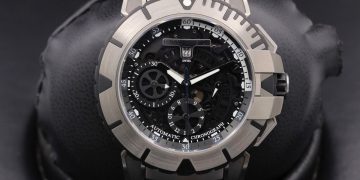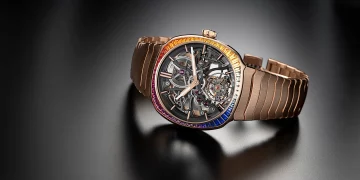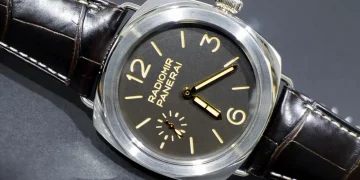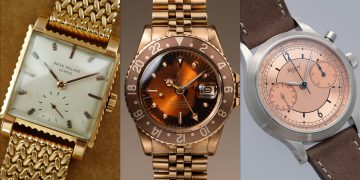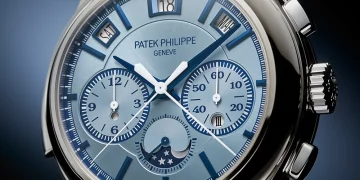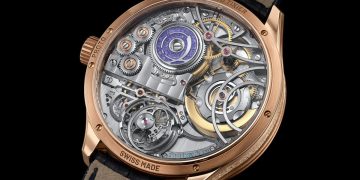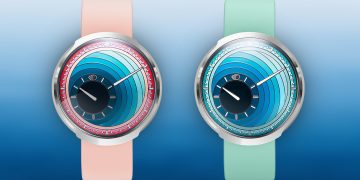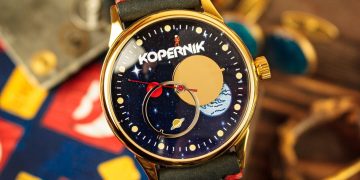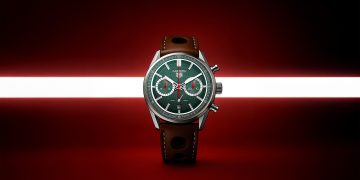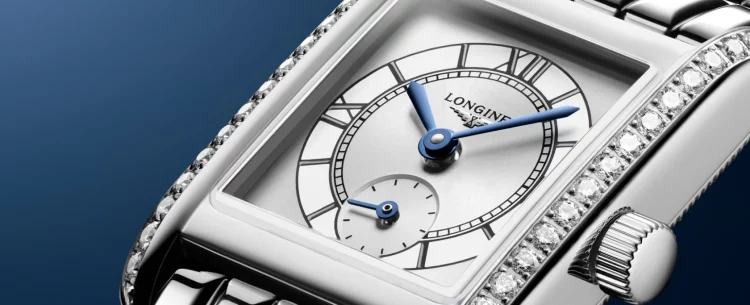The early 20th century marked a period of profound change in the world of design, with the Art Deco movement emerging as one of the most influential artistic styles. Known for its bold geometric patterns, symmetry, and luxurious materials, Art Deco transformed multiple sectors of art, architecture, and fashion. Perhaps surprisingly, one of the most lasting impacts of this movement was on watch design. In this article, we investigate how Art Deco influenced watch aesthetics, leading to the creation of distinctive styles and innovations that continue to shape the beauty of timepieces today.
The Birth of Art Deco and Its Core Characteristics
Art Deco, which emerged in the 1920s and 1930s, was a reaction against the ornate, flowing lines of the earlier Art Nouveau movement. It embraced modernity, embracing sharp lines, geometric shapes, streamlined forms, and the use of opulent materials. It was a fusion of functionality and luxury, representing a new era where industrialization and technology met sophisticated design.
The core principles of Art Deco design included:
- Geometric shapes: Triangles, squares, and chevrons were often used in designs, reflecting the movement’s emphasis on order and symmetry.
- Bold lines and streamlined forms: Art Deco sought to simplify overly ornate styles, replacing them with sleek, angular shapes.
- Luxurious materials: The movement incorporated materials such as gold, platinum, diamonds, enamel, and ivory, all of which were also used in the creation of high-end timepieces.
- Modernism and progress: Art Deco celebrated technological advances, and its designs often reflected the excitement of the modern age.
The Influence of Art Deco on Early 20th-Century Watch Design
As Art Deco permeated the visual culture of the early 20th century, watchmakers embraced the movement’s aesthetic ideals. The world of horology, like many other industries, was ready for a break from traditional, ornate designs. As Art Deco emphasized geometry and clean lines, it presented an ideal opportunity for watchmakers to experiment with novel styles and materials.
Geometric Dials and Symmetry
One of the most recognizable elements of Art Deco in watchmaking was the use of bold geometric shapes on dials. Watches of this period were often designed with square, rectangular, or tonneau-shaped cases, as opposed to the traditional round watch faces. These angular shapes allowed designers to experiment with more dynamic and visually striking layouts. Many Art Deco watches featured symmetrical designs, where every component, from the case to the hands, was carefully positioned to achieve perfect balance.
For instance, Cartier’s iconic “Tank” watch, introduced in 1917, was heavily influenced by the clean lines and geometric shapes that defined Art Deco. The Tank’s rectangular case was a departure from the round designs that were commonplace at the time, and its streamlined design made it instantly recognizable as an example of modern elegance.
Vibrant Colors and Decorative Elements
While the watch cases themselves were often minimalist, the dials of Art Deco timepieces frequently featured vibrant colors and intricate designs. The bold use of enamel, lacquer, and guilloché (a technique involving intricate engraving patterns) contributed to the visual appeal of the watches. These designs were often enhanced by decorative elements like diamond accents and mother-of-pearl inlays, which aligned with the movement’s luxurious aesthetic.
An example of this is Jaeger-LeCoultre’s 1930s Art Deco-inspired watches, which featured colorful enamel dials, often paired with precious stones like sapphires and rubies. This allowed watchmakers to inject a sense of personality and opulence into their timepieces, making them not just functional accessories, but works of art.
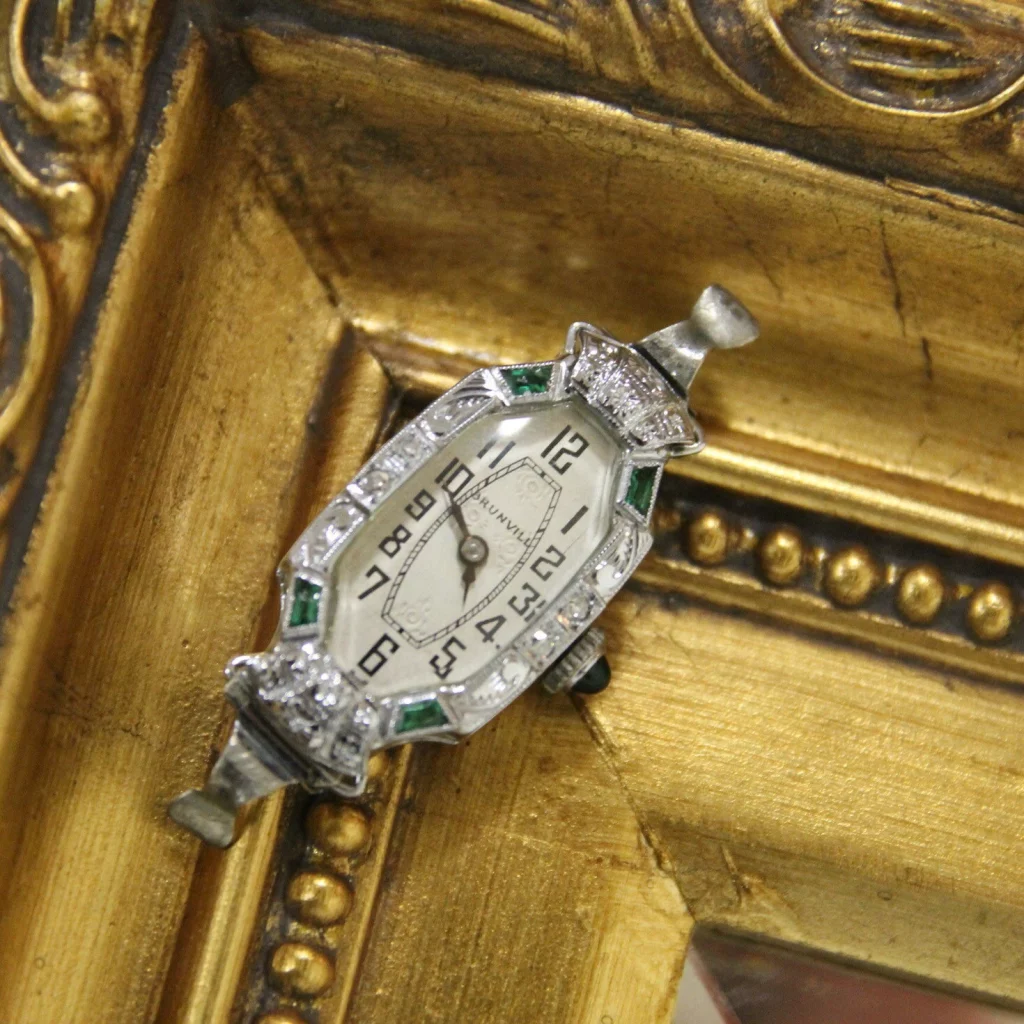
The Materials: Luxury and Innovation in Watchmaking
Art Deco’s affinity for opulence naturally extended to the materials used in watchmaking. The use of precious metals like gold, platinum, and silver became more prominent, as did the incorporation of gemstones and enamel. These luxurious materials were not just decorative; they represented the modern spirit of the time, where craftsmanship and style went hand-in-hand.
In addition to these precious materials, Art Deco watches often incorporated innovative new materials such as steel and chrome, which were being used in other areas of design during this time. The use of steel in watchmaking, combined with elegant designs, marked the beginning of a new era in durable luxury timepieces that would endure throughout the century.
Iconic Art Deco Watches and Their Impact
Several Art Deco-inspired timepieces from the early 20th century have become iconic models that continue to shape the watch industry today. Some of the most famous models influenced by the Art Deco movement include:
- Cartier Tank: Perhaps the most famous Art Deco watch, the Cartier Tank was designed in 1917 by Louis Cartier, inspired by the shape of a military tank. The watch features a rectangular case, clean lines, and a minimalist dial that perfectly encapsulates the Art Deco style. It remains a symbol of timeless elegance.
- Breguet: In the 1920s, Breguet introduced several models with geometric dials, reflecting the Art Deco style’s influence on the Swiss brand. The Breguet Classique collection, which incorporates these early designs, continues to showcase the clean, refined beauty of Art Deco.
- Longines: Known for blending modern style with timeless elegance, Longines created a number of Art Deco-inspired timepieces during the 1920s and 1930s. Their rectangular cases and sleek designs mirrored the essence of the Art Deco movement.
These watches, still revered today, set the standard for a new era of watch design that emphasized luxury, precision, and modernity.
Art Deco’s Influence on Women’s Watches
While Art Deco’s influence on men’s watches is well-documented, the movement also had a significant impact on women’s timepieces. The 1920s and 1930s saw a shift in how women viewed watches—not just as accessories but as symbols of independence and status. Art Deco played a crucial role in this transformation, with women’s watches becoming more ornate, colorful, and distinctive.
Watches designed for women during this time often featured elongated rectangular cases, bracelet-style bands, and intricate decorative details. For example, Van Cleef & Arpels and Cartier produced stunning Art Deco wristwatches that became highly sought-after for their beauty and innovation. The combination of precious metals and vibrant gemstone accents was a key element of these luxurious timepieces, with designs that made watches a glamorous accessory, as well as a functional tool.
Art Deco and Technological Innovations in Watchmaking
Art Deco not only influenced the aesthetic of watches but also impacted the technological evolution of watchmaking during the early 20th century. With the rise of modern manufacturing techniques, watchmakers began to experiment with mechanical innovations that reflected the Art Deco emphasis on progress and modernity.
During this period, automatic movements became more prevalent, with companies like Rolex introducing self-winding mechanisms. These advancements were in line with Art Deco’s desire to celebrate modern technology and progress while maintaining the principles of craftsmanship and luxury.
The Legacy of Art Deco in Modern Watchmaking
The Art Deco movement may have peaked in the 1920s and 1930s, but its influence continues to be felt in the watch industry today. Modern watchmakers often draw on the bold geometric designs, luxurious materials, and sleek lines that characterized the Art Deco era. Many luxury watch brands continue to incorporate elements of Art Deco in their timepieces, paying homage to the enduring legacy of this revolutionary design movement.
For instance, Cartier’s modern Tank models still retain the clean lines and rectangular case design that defined the original Art Deco Tank watch. Similarly, Breguet’s Classique models continue to feature subtle geometric influences that nod to the movement’s rich design heritage.
Conclusion: The Timeless Beauty of Art Deco Watches
Art Deco played a pivotal role in shaping the design and aesthetics of watches in the early 20th century. The movement’s emphasis on geometric shapes, symmetry, luxury materials, and modernity allowed watchmakers to create timepieces that were not only functional but also elegant works of art. From the Cartier Tank to Breguet’s classic models, Art Deco influenced the development of watches that remain icons of timeless beauty. Even today, the spirit of Art Deco can be seen in modern watches, as designers continue to draw inspiration from this influential design movement that forever changed the world of horology.



